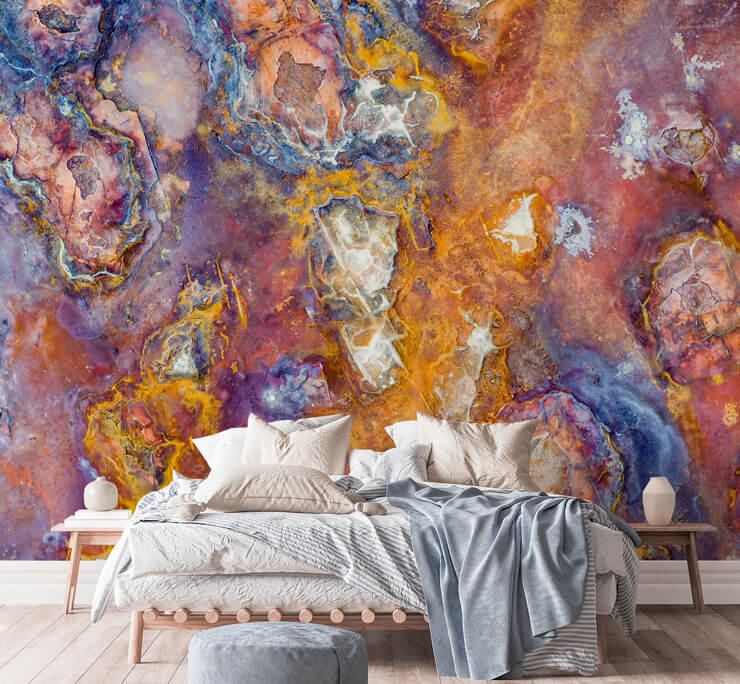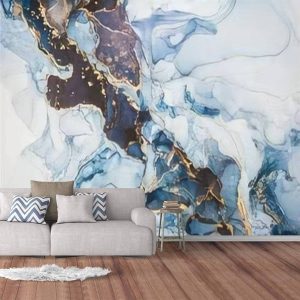Peel and stick murals are a popular choice for home decor due to their ease of use and versatility. However, installing these murals on high ceilings can present unique challenges. This article aims to provide a comprehensive guide to overcoming these challenges, ensuring a smooth and successful installation process.
II. Understanding Peel and Stick Murals
Definition and Benefits
Peel and stick murals are large, adhesive-backed wall coverings that can be easily applied and removed without damaging the surface underneath. They offer several benefits:
- Ease of Installation: No need for paste or water.
- Versatility: Available in various designs and sizes.
- Temporary: Ideal for renters or those who like to change decor frequently.
Common Uses and Applications
Peel and stick murals are commonly used in:
- Living Rooms: To create a focal point.
- Bedrooms: For a personalized touch.
- Offices: To enhance the workspace.
- High Ceilings: To add visual interest and make a statement.
Why They Are Popular for High Ceilings
High ceilings can make a room feel more spacious and grand. Adding a mural can enhance this effect, drawing the eye upward and creating a dramatic visual impact.
III. Challenges of Installing Peel and Stick Murals on High Ceilings
Difficulty in Reaching and Maneuvering

High ceilings require ladders or scaffolding, making it challenging to reach and maneuver the mural into place.
Issues with Alignment and Straightness
Ensuring the mural is straight and aligned correctly can be difficult, especially when working at heights.
Adhesion Problems Due to Gravity
Gravity can cause the mural to peel away from the ceiling, especially if the adhesive is not strong enough.
Potential for Air Bubbles and Wrinkles
Air bubbles and wrinkles are common issues that can be exacerbated by the height and angle of the installation.
IV. Essential Tools and Materials
List of Necessary Tools
- Ladder or Scaffolding: To reach high ceilings.
- Smoothing Tool: To remove air bubbles.
- Utility Knife: For trimming excess material.
- Level: To ensure straight lines.
- Measuring Tape: For accurate measurements.
Recommended Materials
- High-Quality Peel and Stick Murals: Ensure strong adhesion.
- Primer: To prepare the surface.
- Painter’s Tape: To hold the mural in place temporarily.
Safety Equipment
- Harness: For added safety when working at heights.
- Gloves: To protect your hands.
V. Preparing the High Ceiling for Installation
Cleaning and Priming the Surface
- Clean the Ceiling: Remove dust and debris.
- Apply Primer: Ensure the surface is smooth and ready for the mural.
Ensuring the Ceiling is Dry and Smooth
- Check for Moisture: Ensure the ceiling is completely dry.
- Smooth the Surface: Sand any rough areas.
Marking Guidelines for Alignment
- Use a Level: Draw straight lines to guide the installation.
- Measure Twice: Ensure accuracy before applying the mural.
VI. Step-by-Step Installation Process
Pre-Cutting the Mural Strips
- Measure the Ceiling: Determine the size of each strip.
- Cut the Mural: Pre-cut strips to make installation easier.
Using a Level to Ensure Straight Lines
- Align the First Strip: Use a level to ensure it is straight.
- Apply Subsequent Strips: Align each strip with the previous one.
Techniques for Peeling and Sticking
- Peel Back a Small Section: Start at the top.
- Stick and Smooth: Use a smoothing tool to remove air bubbles.
- Continue Peeling: Work your way down, smoothing as you go.
Tips for Smoothing Out Air Bubbles and Wrinkles
- Use a Smoothing Tool: Apply firm pressure.
- Work from the Center Outward: Push air bubbles to the edges.
- Reposition if Necessary: Peel back and reapply if needed.
VII. Ti investigate this site ps for Overcoming Specific Challenges
Working with a Partner for Better Control
- Team Effort: One person can hold the mural while the other smooths it out.
Using Painter’s Tape to Hold the Mural in Place
- Temporary Hold: Use tape to secure the mural while you work.
Managing Large Mural Sections
- Cut into Smaller Sections: Easier to handle and align.
Addressing Temperature and Humidity Issues
- Control the Environment: Install in a controlled environment to prevent adhesion issues.
VIII. Post-Installation Care and Maintenance
Checking for and Fixing Any Loose Edges
-
- Inspect the Mural: Look for any areas that may be peeling.
- Reapply Adhesive: Use additional adhesive if necessary.
Cleaning the Mural Without Damaging It
- Use a Soft Cloth: Gently wipe the surface.
- Avoid Harsh Cleaners: Use mild soap and water.
Ensuring Long-Term Adhesion
- Regular Inspections: Check periodically for any issues.
- Maintain a Stable Environment: Avoid extreme temperature and humidity changes.
IX. Case Studies and Real-Life Examples
Success Stories from Homeowners and Professionals
- Homeowner A: Successfully installed a mural on a 12-foot ceiling.
- Professional B: Tips from a professional installer.
Common Mistakes and How to Avoid Them
- Mistake 1: Not using a level.
- Solution: Always use a level to ensure straight lines.
- Mistake 2: Rushing the installation.
- Solution: Take your time to avoid air bubbles and wrinkles.
Visual Examples of Well-Installed High Ceiling Murals
- Example 1: A beautifully installed mural in a living room.
- Example 2: A dramatic mural in a high-ceilinged office.
X. Conclusion
Recap of Key Points
- Preparation is Key: Clean and prime the surface.
- Use the Right Tools: Ensure you have all necessary tools and materials.
- Take Your Time: Avoid rushing to prevent mistakes.
Encouragement to Try Peel and Stick Murals on High Ceilings
- Transform Your Space: High ceilings offer a unique opportunity for stunning decor.
- Share Your Experience: We’d love to hear about your projects.
Invitation for Readers to Share Their Experiences and Tips
- Join the Community: Share your tips and experiences in the comments.

Meet Hi there! I’m Jason Noon, a passionate Product Consultant specializing in mural design and customization. Welcome to MuralMoxie, where creativity meets craftsmanship. My journey into the world of murals began over a decade ago. I started as a graphic designer, but my love for large-scale art installations quickly took over.




